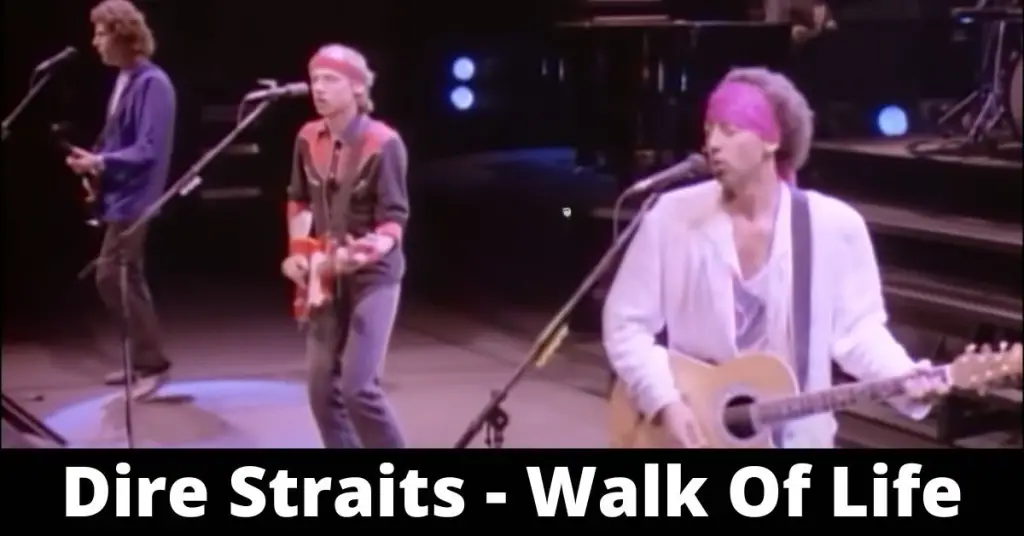Known for their subtle blend of bluesy restraint and intricate storytelling, Dire Straits typically exuded a kind of cool minimalism. But with “Walk of Life,” the band let loose, delivering a rollicking, keyboard-driven track that stands as one of their most beloved and surprisingly exuberant hits.
Released in 1985 as part of their massively successful album Brothers in Arms, “Walk of Life” proved that Mark Knopfler’s band of laid-back virtuosos could craft a straight-up pop-rock gem—and still make it sound unmistakably their own.
A Surprise Smash Hit
“Walk of Life” began as something of an afterthought. Originally written during the Brothers in Arms sessions, the band wasn’t even sure if it should make the album. But when engineer Neil Dorfsman and others pushed for its inclusion, they struck gold.
Released as a single, “Walk of Life” quickly climbed the charts, reaching #2 in the UK and #7 on the Billboard Hot 100 in the U.S. It became one of the band’s most commercially successful songs, and a staple of ‘80s radio playlists from then on.
The Sound: Pub Rock Meets Synth Pop
From the moment the song kicks in with that iconic, bouncy Vox organ riff—played by keyboardist Alan Clark—you know you’re in for something a little different from the often moody or narrative-driven tracks Dire Straits was known for.
This is pub rock joy, layered with a crisp rhythm section, catchy guitar licks, and a groove that begs you to tap your feet. But even with the upbeat tempo, the musicianship is vintage Dire Straits: precise, tasteful, and effortlessly cool.

Mark Knopfler’s guitar playing is clean and twangy, more country-tinged than bluesy here, complementing the song’s playful tone. His voice, understated as always, delivers the lyrics with both affection and a wink.
Lyrics: A Tribute to the Unsung Music Man
On the surface, “Walk of Life” is a song about a busker named Johnny—a street performer playing classic rock and roll to passersby. But underneath, it’s a celebration of music itself—the pure, everyday joy of playing and listening to it.
“Here comes Johnny singing oldies, goldies / Be-Bop-A-Lula, Baby What I Say…”
The song references rock ’n’ roll icons and classic tunes, weaving a warm nostalgia into a tribute to those who bring music to the world not from a stadium stage, but from street corners, bars, and subway tunnels.
It’s humble. It’s human. And that’s part of what makes it so beloved.
Music Video and Cultural Impact
The music video for “Walk of Life” leaned into the fun. Interspersing footage of Dire Straits performing with clips of bloopers and fumbles from sports events, it added a layer of humor and energy that endeared the band to a broader audience.
Over the years, “Walk of Life” has been featured in commercials, sports montages, and countless playlists celebrating optimism and feel-good vibes. It’s the lighter side of Dire Straits—and listeners can’t get enough of it.
Legacy: More Than Just a Pop Song
While it might lack the gravitas of “Brothers in Arms” or the epic sprawl of “Telegraph Road,” “Walk of Life” endures because of its accessibility and charm. It showcases a band capable of incredible musicianship without ever needing to show off.
It’s also a reminder that not all great rock songs need to be heavy. Sometimes, all it takes is a few great chords, a catchy melody, and a bit of heart.
Final Thoughts
“Walk of Life” is Dire Straits letting down their hair, smiling through the groove, and reminding us that music doesn’t always have to be deep to be meaningful. It can just make you feel good—and sometimes, that’s more than enough.
So the next time you hear that bouncy organ intro, let it lift your spirits.
Because for three-and-a-half minutes, you’re walking through life—with a song in your step.


Facebook Comments